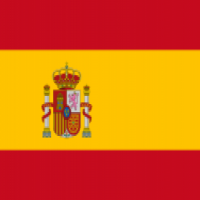Summary:
A Spanish university has developed a method for the diagnosis and prevention of colorectal cancer (CRC). Specifically, an accurate, simple, sensitive and efficient method of extraction and analysis of volatile organic compounds for application as a non-invasive screening test of CRC (stool analysis). It can be used in a wide range of patients, eliminating/reducing the number of false positives/negatives. Companies interested in license or technical cooperation agreements are sought.
Description:
Colorectal cancer (CRC) is one of the leading causes of cancer death worldwide. Current methods of detecting CRC can be invasive, such as colonoscopies, or non-invasive, such as the faecal occult blood test (FOBT). Although these screening tests have helped to reduce mortality, their performance is not optimal. The FOBT has a substantial number of false negatives and as a consequence a significant number of missed diagnoses of CRC. In addition, a significant percentage of healthy participants who are screened in the population receive a false positive result, which in turn leads to the unnecessary use of colonoscopies. Colonoscopies are an invasive technique, with a risk of complications (bleeding or perforation) as well as a high cost.
There are multiple publications that have provided studies that relate certain biomarkers, some of them volatile organic compounds (VOCs), with the probability of a subject suffering from CRC through different methods. However, none of them have so far provided a method, which is fast, reliable, economical and with high sensitivity, to detect and quantify VOCs that can be useful as biomarkers and at the same time allow the development of a screening method that can reduce or eliminate false positives and false negatives in the detection of CRC.
In this sense, a Spanish research group has developed a device adapted for the qualitative and quantitative analysis of VOCs) in solid and/or semi-solid samples, which consists of the following three elements: a headspace adsorptive magnetic extraction device, a thermal desorption system coupled to a gas chromatograph-mass spectrometer, and, a mass spectrometer that provides qualitative and quantitative analysis of VOCs (Figure 1).
The headspace adsorptive magnetic extraction device allows the volatilisation of VOCs from a sample, subjected to a certain temperature. The volatile compounds in the headspace are subsequently retained in an adsorbent trap, which is then desorbed and injected for separation and detection by gas chromatography-mass spectrometry.
This apparatus allows the extraction, identification and quantification of VOCs (P-cresol, 1H-indol, 3(4H)-dibenzofuranone or tetrahydrofolate) from stool samples, known as biomarkers in subjects suffering from CRC, or in subjects who are predisposed to suffering from CRC, to provide a prognosis of the subject's condition or to provide a negative prognosis.
Therefore, this device can be used to extract and perform accurate, simple, sensitive and effective analysis of VOCs for application as a non-invasive screening test for CRC.
The research group is looking for analytical instrumentation manufacturers or Medical diagnòstic laboratories interested in acquiring this technology for commercial exploitation through patent licensing agreements. The company should be responsible for the development of the commercial prototype, the validation of the technology, and its introduction into the market. The university will be ready to provide technical assistance in each step, if required.
However, the research group would be also interested in establishing technical cooperation agreements to further develop the laboratory-scale method, to find new applications or to adapt it to the company’s needs. The goal of this type of collaboration would be increasing the technology readiness level for a future commercial exploitation of the patent. The university would offer its support based on their know-how; while, the partner sought would provide its expertise to help improve this invention. The university would offer this partner a preferential option to acquire this technology in exclusivity.
Type (e.g. company, R&D institution…), field of industry and Role of Partner Sought:
- Type of partner sought: Companies
- Specific area of activity of the partner: medical diagnostic laboratories; analytical instrumentation manufacturers.
- Task to be performed:
* In the license agreement: to buy a license for the technology, to produce a commercial prototype and make its validation in real scenarios, and to introduce it into the market.
* In the technical cooperation agreement: to provide their expertise in order to collaborate with the scientists to develop new applications for other types of diagnostics. The company should identify technical requirements and/or market and client’s needs in order to carry out further technical development so that the market readiness will be increased and the technology could be commercially exploited.
Stage of Development:
Under development/lab tested
Comments Regarding Stage of Development:
The technology is developed at laboratory scale and has been used for the diagnosis of CRC in stool samples.
Accordingly, in the analysis carried out, the research group observed that the increase in the concentration of the three biomarkers, 3(4H)-dibenzofuranone, p-cresol or tetrahydrofolate, in a sample of a subject to be evaluated compared with the sample of a healthy subject indicated the presence or the beginning of the disease or the probability of suffering from it or provided a negative prognosis of the subject's condition. Whereas, a decrease in the concentration of the biomarker 1H-indol in a sample of a test subject compared to a sample of a healthy subject indicated the presence or onset of the disease or the probability of having the disease or provided a negative prognosis of the subject's condition.
The method had a very good sensitivity (83% for both p-cresol and 3(4H)-dibenzofuranone) and specificity (80% for p-cresol; and 74% for 3(4H)-dibenzofuranone).
IPR Status:
Patent(s) applied for but not yet granted
Comments Regarding IPR Status:
Spanish patent applied for but not yet granted.
External code:
TOES20201113003








